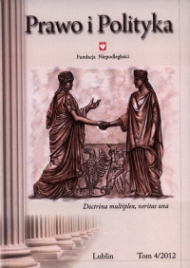The United States 2010 reapportioned: electoral college for a new decade
The United States 2010 reapportioned: electoral college for a new decade
Author(s): Maciej TurekSubject(s): Government/Political systems, Electoral systems, Present Times (2010 - today)
Published by: Fundacja Niepodległości
Keywords: U.S. political system; U.S. electoral system; presidential elections in the United States; Electoral College; campaign strategy;
Summary/Abstract: In spring 2010, the U.S. Census Bureau conducted its decennial duty of counting the United States population. While the findings of this extensive operation influence many important socio-economic decisions of the authorities, among the first visible results have been those in the federal electoral politics area. As the number of states’ seats in the U.S. House of Representatives has been determined by each state population, it also affects the number of electors the states have appointed to elect the President of the United States. Thus every ten years, along with apportioning states’ representatives in the U.S. House, the landscape of presidential electoral politics is altered, too. In this paper, basing on the several variables and the number of state electors in presidential elections 2012-2020, I assess whether the two major American political parties can claim net gains in the aftermath of the apportionment, conducted after the 2010 Census. I will argue it is Republican Party will benefit, while the Democratic Party will lose a few electoral votes to its core base in the three presidential election cycles, to be conducted in the next decade. I will focus on the analysis of 2010 Census on the reapportionment and its relation to Electoral College votes, while issues related to congressional redistricting and House elections are beyond the scope of the article.
Journal: Prawo i Polityka
- Issue Year: 2012
- Issue No: 4
- Page Range: 7-32
- Page Count: 26
- Language: English

